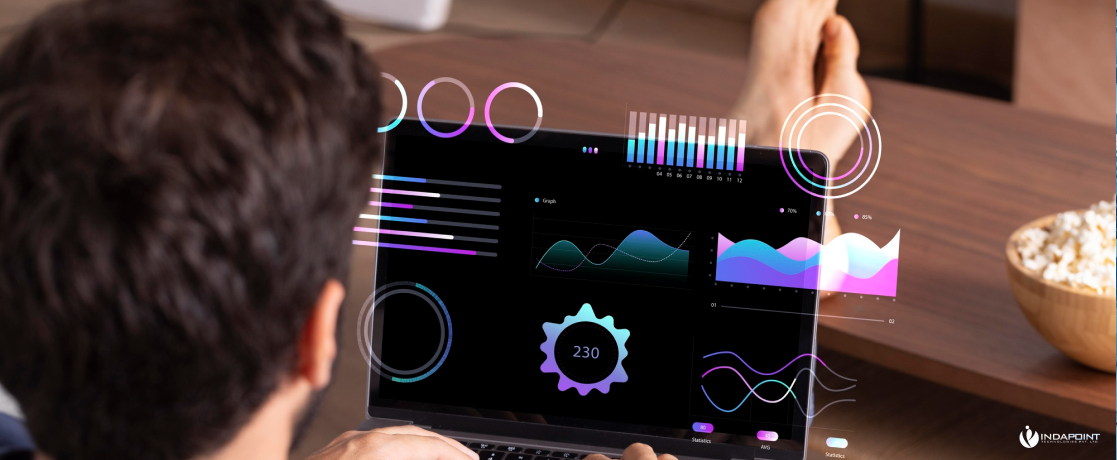Comprehensive Guide to Data Analytics with Python
March 21, 2025

Python is a powerful programming language widely used for data analytics due to its rich ecosystem of libraries. This comprehensive guide explores various aspects of data analytics with Python, including data manipulation, visualization, statistical analysis, time series forecasting, the Secret to High-Performance Data Processing, database operations, web scraping, NLP, and machine learning. Key libraries like NumPy, Pandas, Matplotlib, SciPy, Prophet, PySpark, BeautifulSoup, and Scikit-learn are highlighted with practical use cases.
Comprehensive Guide to Data Analytics with Python
Data analytics has become an essential field in today’s data-driven world, and Python is one of the most powerful and widely used programming languages for handling data analytics tasks. Python’s rich ecosystem of libraries provides robust capabilities for data manipulation, visualisation, statistical analysis, machine learning, and more.
In this blog, we will explore data analytics with Python, using the classification shown in the provided image. We will cover various Python libraries categorised into different aspects of data analytics, including:
- Data Manipulation
- Data Visualization
- Statistical Analysis
- Time Series Analysis
- Database Operations
- Web Scraping
- Natural Language Processing (NLP)
- Machine Learning
Each section will provide insights into the available tools and how they can be used for efficient data analysis. Let’s dive in!
1. Data Manipulation

Data manipulation is the foundation of data analytics. Python provides several powerful libraries for handling, cleaning, and transforming data.
Key Libraries for Data Manipulation:
- NumPy: Provides support for multi-dimensional arrays and mathematical operations.
- Pandas: The go-to library for data manipulation, offering DataFrame structures for easy data handling.
- Polaris: A faster alternative to Pandas optimised for parallel processing.
- Modin: Speeds up Pandas operations using parallel execution.
- Datatable: Similar to Pandas but optimised for large datasets.
- Vaex: Efficiently handles large datasets using out-of-core data processing.
- CuPy: GPU-accelerated numerical computations.
2. Data Visualization

Data visualisation helps us understand trends, patterns, and insights. Python provides various visualisation libraries.
Key Libraries for Data Visualization:
- Matplotlib: The fundamental plotting library in Python.
- Seaborn: Built on Matplotlib, it provides beautiful statistical plots.
- Plotly: Interactive plots with web support.
- Altair: Declarative visualisation framework.
- Bokeh: Interactive visualisation for web applications.
- Pygal: Generates SVG-based interactive plots.
- Folium: Used for geospatial data visualisation.
3. Statistical Analysis

Statistical analysis helps in understanding distributions, correlations, and significance testing.
Key Libraries for Statistical Analysis:
- SciPy: Scientific computations, including statistics, linear algebra, and signal processing.
- Statsmodels: Advanced statistical modeling.
- Pingouin: User-friendly statistical tests.
- Lifelines: Survival analysis in Python.
- PyStan: Bayesian statistical modeling.
- PyMC3: Probabilistic programming for Bayesian models.
4. Time Series Analysis
Time series analysis is crucial for forecasting and pattern recognition over time.
Key Libraries for Time Series Analysis:
- PyFlux: Time series forecasting and Bayesian inference.
- Sktime: Unified interface for time series learning.
- Prophet: Facebook’s forecasting tool for time series data.
- Darts: Time series forecasting framework.
- TsFresh: Automated feature extraction for time series.
- Kats: Facebook’s AI-powered time series analysis tool.
- AutoTS: Automated time series forecasting.
5. Database Operations

Handling large datasets often requires database interactions. Powering Big Data Like a Pro is crucial for optimizing performance and efficiency.
Key Libraries for Database Operations:
- Dask: Parallel computing and large-scale data processing.
- PySpark: Python API for Apache Spark.
- Ray: Parallel and distributed computing.
- Koalas: Bridges Pandas with Spark.
- Hadoop: Big data processing framework.
- Kafka-Python: Interface for Apache Kafka message streaming.
6. Web Scraping

Web scraping allows us to extract data from websites for analysis.
Key Libraries for Web Scraping:
- BeautifulSoup: Parses HTML and XML.
- Scrapy: Powerful web scraping framework.
- Selenium: Automates web browsers.
- MechanicalSoup: Lightweight browser automation.
- Octoparse: No-code web scraping tool.
7. Natural Language Processing (NLP)

NLP enables machines to understand and process human language.
Key Libraries for NLP:
- NLTK: A comprehensive NLP toolkit.
- spaCy: Efficient NLP processing.
- TextBlob: Simplified NLP operations.
- Genism: Topic modeling and word embeddings.
- Polyglot: Multi-language NLP support.
- BERT: Google’s transformer-based language model.
8. Machine Learning

Machine learning enables predictive analytics and pattern recognition.
Key Libraries for Machine Learning:
- Scikit-learn: Machine learning algorithms and preprocessing.
- TensorFlow: Deep learning framework by Google.
- Keras: High-level API for neural networks.
- PyTorch: Deep learning framework by Facebook.
- XGBoost: Gradient boosting algorithm.
- JAX: High-performance machine learning computations.
Conclusion
Python offers an extensive set of libraries for every aspect of data analytics. Whether you’re working with data manipulation, visualisation, statistics, machine learning, NLP, or time series forecasting, a Python tool can help you. By leveraging these tools, you can perform end-to-end data analytics efficiently and effectively.
Ready to elevate your data analysis game? With Python’s rich ecosystem of libraries and powerful capabilities, you can transform raw data into valuable insights effortlessly. Whether it’s data manipulation, visualization, statistical analysis, machine learning, or web scraping, Python has you covered!





